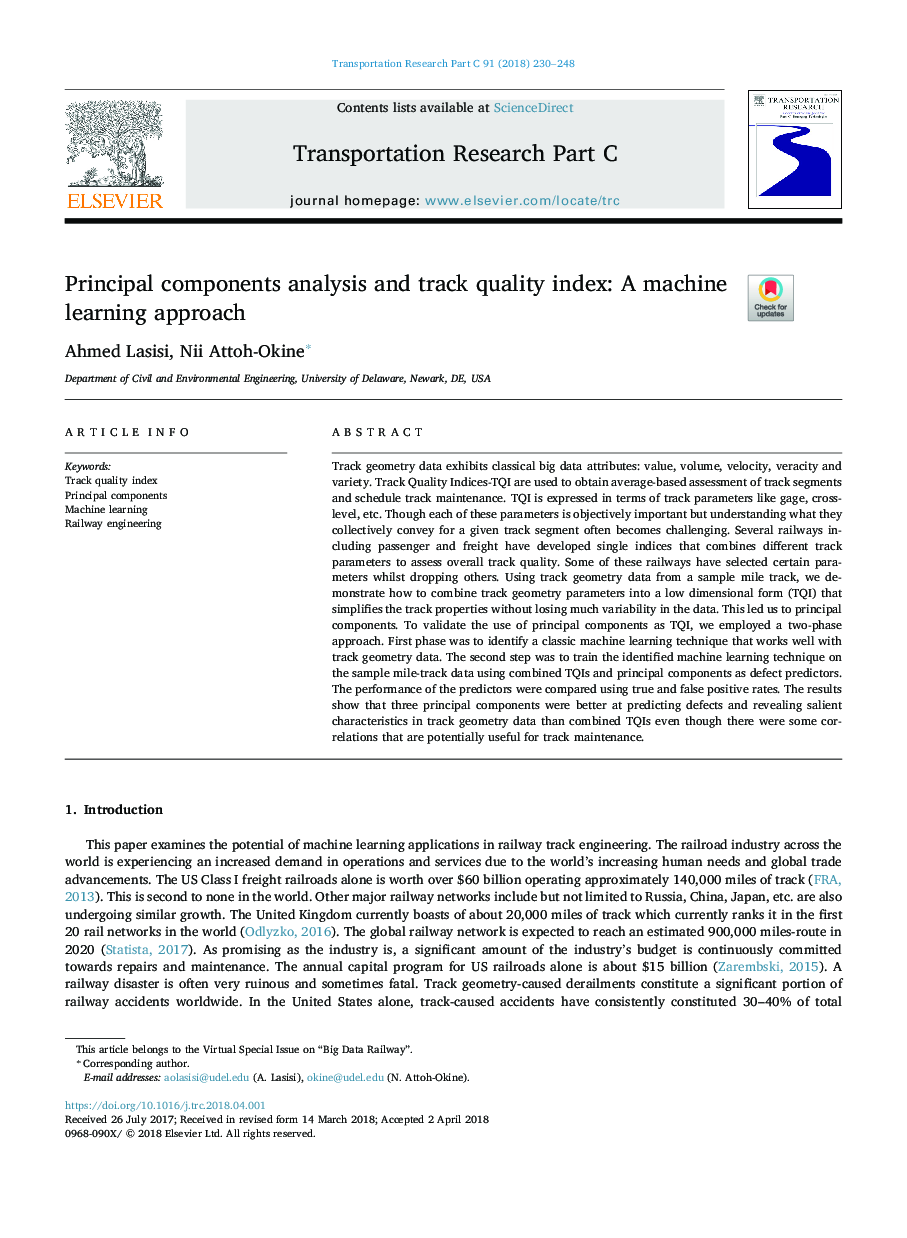| Article ID | Journal | Published Year | Pages | File Type |
|---|---|---|---|---|
| 6935932 | Transportation Research Part C: Emerging Technologies | 2018 | 19 Pages |
Abstract
Track geometry data exhibits classical big data attributes: value, volume, velocity, veracity and variety. Track Quality Indices-TQI are used to obtain average-based assessment of track segments and schedule track maintenance. TQI is expressed in terms of track parameters like gage, cross-level, etc. Though each of these parameters is objectively important but understanding what they collectively convey for a given track segment often becomes challenging. Several railways including passenger and freight have developed single indices that combines different track parameters to assess overall track quality. Some of these railways have selected certain parameters whilst dropping others. Using track geometry data from a sample mile track, we demonstrate how to combine track geometry parameters into a low dimensional form (TQI) that simplifies the track properties without losing much variability in the data. This led us to principal components. To validate the use of principal components as TQI, we employed a two-phase approach. First phase was to identify a classic machine learning technique that works well with track geometry data. The second step was to train the identified machine learning technique on the sample mile-track data using combined TQIs and principal components as defect predictors. The performance of the predictors were compared using true and false positive rates. The results show that three principal components were better at predicting defects and revealing salient characteristics in track geometry data than combined TQIs even though there were some correlations that are potentially useful for track maintenance.
Related Topics
Physical Sciences and Engineering
Computer Science
Computer Science Applications
Authors
Ahmed Lasisi, Nii Attoh-Okine,
